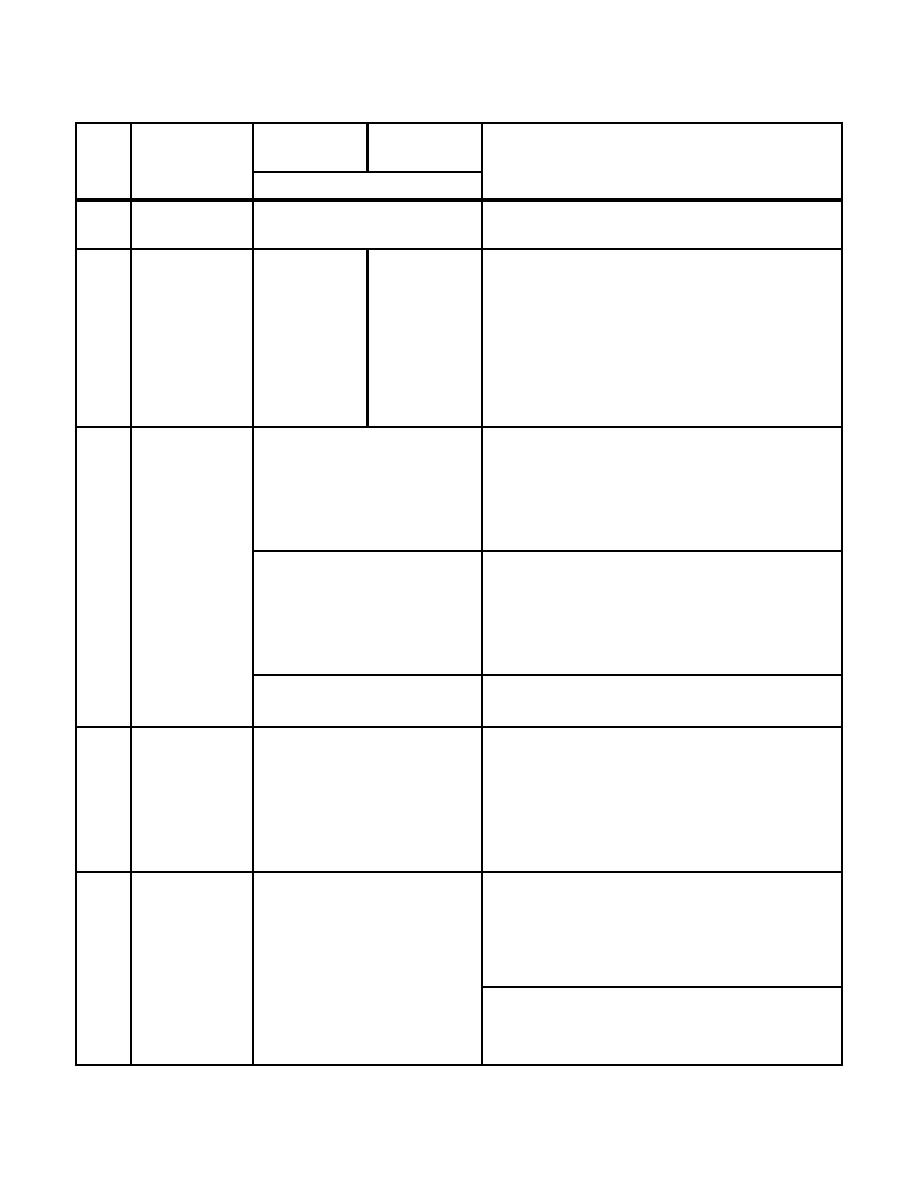
Chapter 3
Table 3.2. Runways.
Class A
Class B
Runway
Runway
Item
Item
No.
Description
Requirement
Remarks
shoulders
maximum is permitted where arresting systems
are installed.
Where economically feasible, the runway will
No grade
No grade
6
Longitudinal
have a constant centerline gradient from end to
change is to
change is to
runway grade
end. Where terrain dictates the need for
occur less
occur less
changes
centerline grade changes, the distance between
than 900 m
than 300 m
two successive point of intersection (PI) will be
[3,000 ft]
[1,000 ft]
not less than 300 m [1,000 ft] and two
from the
from the
successive distances between PIs will not be
runway end
runway end
the same.
For Army and Air Force.
Max 0.167% per
7
Rate of
30 linear meters
longitudinal
Maximum rate of longitudinal grade change is
[100 linear feet]of runway
runway grade
produced by vertical curves having 180 meters
changes
[600 foot] lengths for each percent of algebraic
difference between the two grades.
For Navy and Marine Corps.
Max 0.10% per 30
linear meters
Maximum rate of longitudinal grade change is
[100 linear feet] of runway
produced by vertical curves having 300 meters
[1,000 foot] lengths for each percent of
algebraic difference between the two grades.
See Remarks
Exceptions: 0.4 percent for edge of runways at
runway intersections.
Any two points 2.4 m [8 ft] above the pavement
8
Longitudinal
Min 1,500 m
must be mutually visible (visible by each other)
sight distance
[5,000 ft]
for the distance indicated.
For runways shorter than 1,500 meters [5,000
ft], height above runway will be reduced
proportionally.
Min 1.0%
New runway pavements will be centerline
9
Transverse
Max 1.5%
crowned. Existing runway pavements with
grade of
insufficient transverse gradients for rapid
runway
drainage should provide increasing gradients
when overlaid or reconstructed.
Slope pavement downwards from centerline of
runway.
1.5% slope is optimum transverse grade of
3-4



 Previous Page
Previous Page
